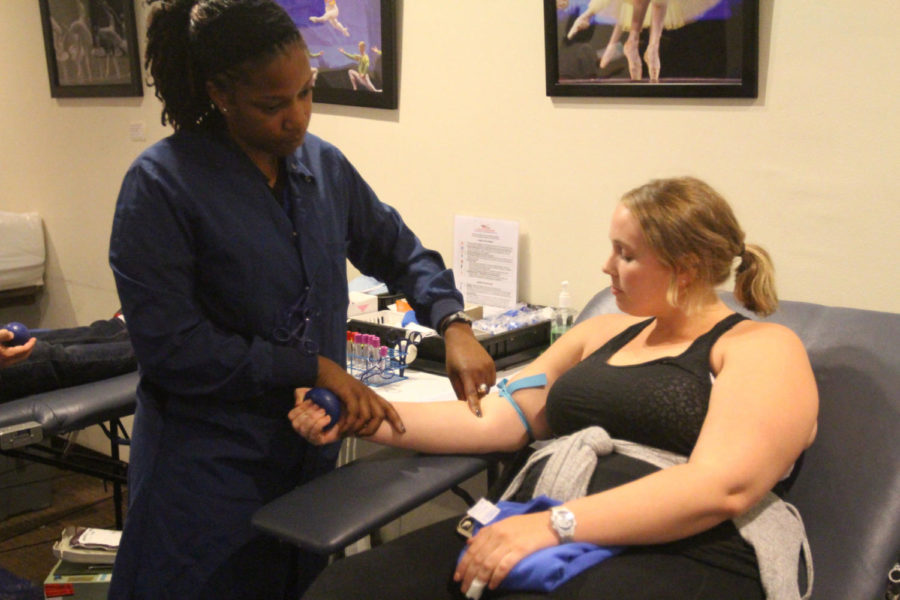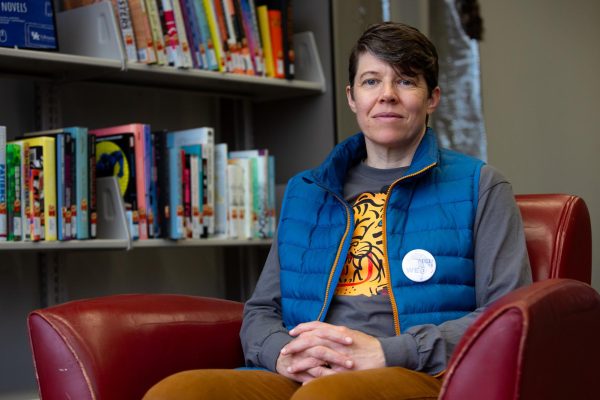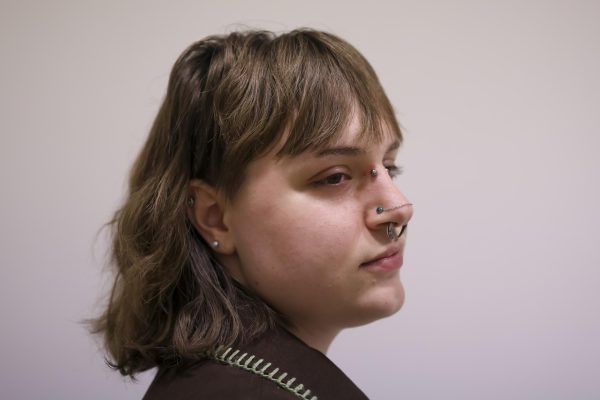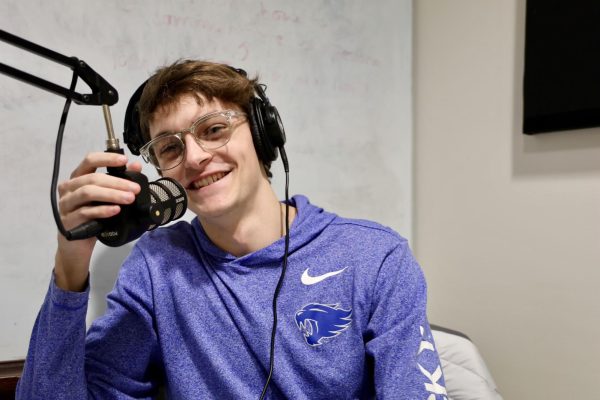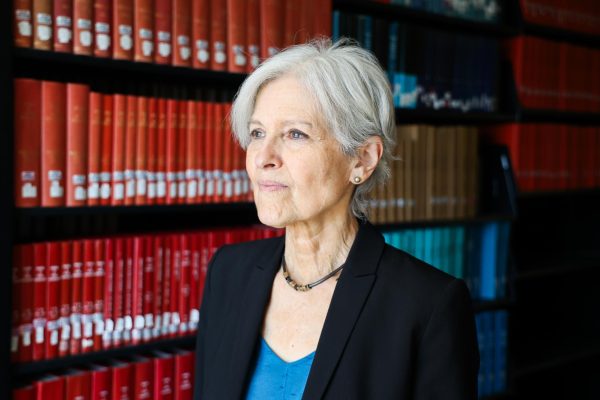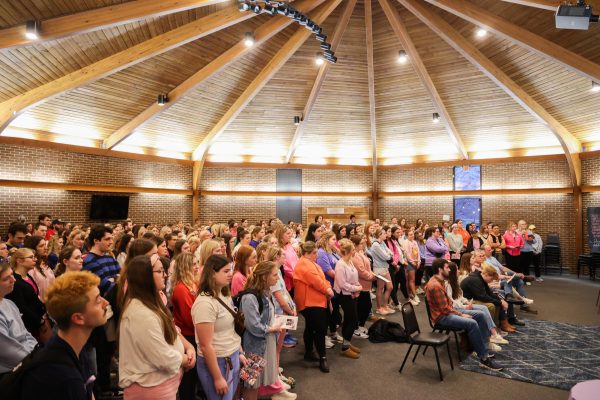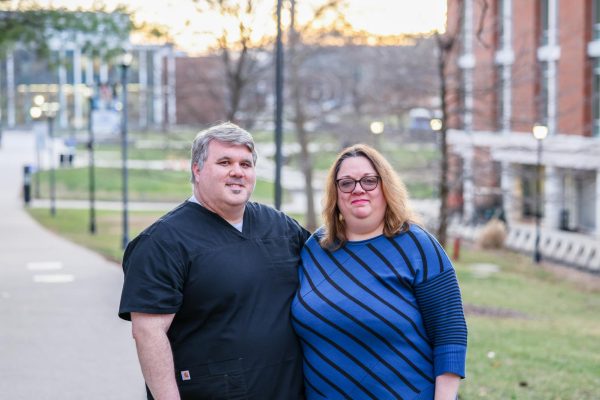‘Easy and accessible’: How UK students can give back and save lives
Sophomore Maddie Bland donated blood at the Singletary Center for the Arts at University of Kentucky in Lexington, Ky. Photo by Josh Mott | Staff file photo
March 28, 2023
The stakes are incredibly high when one is diagnosed with cancer or experiences a major accident.
In these stressful and often tragic moments, patients need a lot.
Beyond care and compassion, they often rely on some sort of physical donation like blood, plasma or even organs to both improve patients’ standard of living and save their lives.
Thus, donations are vital anytime and anywhere.
This is why students at the University of Kentucky will see recurring “blood drives,” or blood donation events, launched in partnership with the nonprofit Kentucky Blood Center (KBC). Usually, there are four blood drives a year at UK. During these donation events, the KBC welcomes everyone who is eligible to donate to do so at UK’s Gatton Student Center.
“We are coming to you to make it easy and accessible,” Eric Lindsey, the director of media and branding at the KBC, said.
According to the American Red Cross, every healthy whole blood donor can donate up to six times a year. The process, from registration to post-donation refreshments, takes about 30 to 40 minutes.
At the KBC’s January blood drive on campus, 453 donors registered, and about half of them were new ones, according to Lindsey.
The participation of young, able donors is especially important for blood donations, but Lindsey said the “younger demographic” currently donates less because they weren’t confronted with donation opportunities during the COVID-19 pandemic. As a result of this, the overall number of donations at the KBC decreased from 85,000 in 2019 to 69,000 in 2020, he said. In 2022, that number rose to 78,000.
The donated blood to the KBC is not used for research but for immediate help, staying in Kentucky to be distributed to 70 hospitals across the state.
Overall, “one in four people need a blood transfusion in their life,” Lindsey said, citing gun wounds, accidents and cancer as reasons for such procedures.
Of the donations made to the KBC, 25% of the blood goes to cancer patients, Lindsey said. He added that patients with sickle cell disease, premature diseases, premature births and those who require organ donations also benefit from the donated blood.
Equally as important as blood donations are organ donations.
Currently, there are about 1,000 Kentuckians waiting for an organ donation. Last year, there were only 239 organs donated in Kentucky, according to Crysta McGee of the Kentucky Organ Donation Affiliates.
But those numbers can be changed, McGee said. She encouraged organ and tissue donation registration to do so.
“(Registration is) free and takes two minutes,” she said.
The organ donor registration process can be completed online through Donate Life Kentucky.
According to Donate Life Kentucky’s website, nearly all Kentuckians have a positive view of donations, but only 59% of the state’s residents have joined the Kentucky Donor Registry.
McGee stressed the importance of donors communicating with their family members about their decision, considering that most organ donations occur after death.
“If you are registered, you should tell your family that decision,” so that they know if and what you wished to donate, she said.
McGee explained that, while most students are registered donors, many do not think it affects them. The impact of organ donations, though usually not realized until later in life and in death, stretches far beyond a single person.
One donor’s organs can save up to eight lives, according to Donate Life Kentucky, and up to 50 lives can be healed by one tissue donor.
Another lesser-known but potentially life-saving mode of donation accessible to students is stem cell donating.
Often just as simple as registering to be an organ donor, registering to be a stem cell or bone marrow cell donor involves an online registration process and a mailed swab kit test.
Be The Match, a registry organization operated by the National Marrow Donor Program, details the process on its website. After a potential donor swabs their cheek and sends the sample back, the donor’s human leukocyte antigen (HLA) type is determined and added to the registry.
While it could be months or even years before the donor is contacted again and matched with a patient in need, the simple act of registration offers the potential to save the life of a matching patient.
Dannie Moore, a spokesperson for Be The Match, highlighted the importance of taking advantage of the more unfrequented stem cell donation process.
“Every three minutes, someone in the U.S. is diagnosed with a life-threatening blood cancer or disorder … We provide help and hope,” Moore said.
Stem cell donations are needed most from a younger, targeted age range, she said.
“The science on patient outcome shows that receiving cells from younger donors leads to a better long term survival rate,” Moore said.
The ideal age range for stem cell donors is between 18 and 40, she said, as the cells of these younger individuals are more robust.
Stem cell donations are used to cure more than 70 diseases, including leukemia, anemia and sickle cell disease, according to Be The Match’s website.
Be The Match will partner with UK’s United Greek Council, Interfraternity Council, Kentucky Panhellenic, Order of Omega and the National Pan-Hellenic Council to bring bone marrow donor registration and swab locations across campus March 27-31.
It has never been easier and less costly to save lives, especially for college students. As illustrated by the efforts of various donor programs across the Commonwealth and U.S., real impact can be made for patients in mere minutes or hours.









































































































































